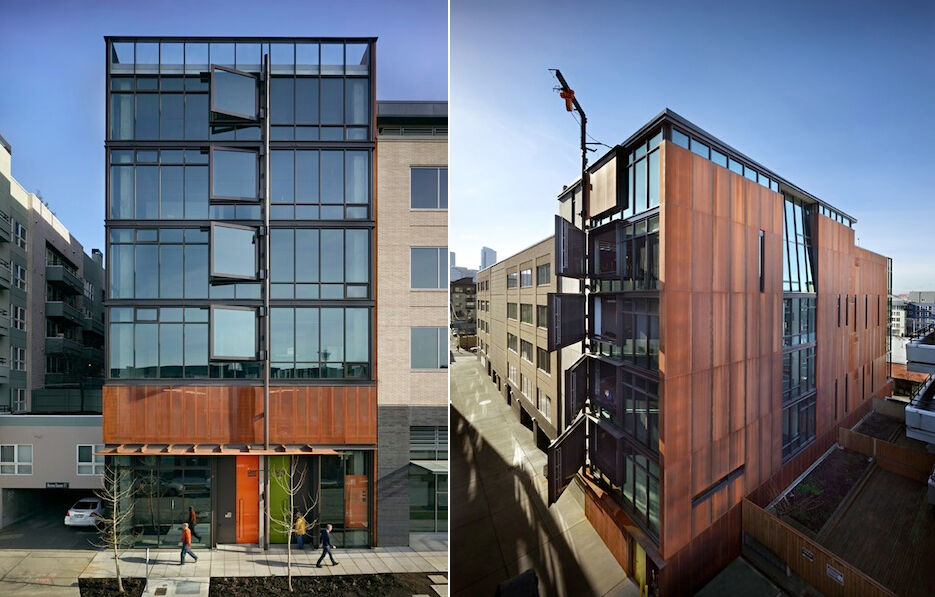Office Design
Optimize Cross-ventilation
What Is It?

Benjamin Benschneider and Olson Kundig Architects
Cross ventilation relies on wind for cooling. When wind blows on a building, a pressure difference is created between the windward (wind-facing) and leeward walls. Openings (i.e. windows) placed on opposite sides of a building will allow the cooler external air to enter the building while warmer internal air is sucked out from the leeward side openings. The degree of passive cooling is determined by the size and placement of the building and ventilation openings, as well as the regularity of wind. As a result, while cross ventilation can provide effective cooling, it can also be unreliable when naturally occurring wind is not available. As a result, larger buildings will typically require mechanical ventilation systems or passive stack ventilation in order to ensure ventilation continues in the winter and when wind is unavailable.
For cross ventilation to be effective, the building must be in a location with regular summer winds. The windward wall should ideally be oriented to be perpendicular to typical summer wind; perpendicular orientation may not always be possible in existing buildings. The building itself should ideally be relatively narrow to ensure fresh air is distributed throughout the building. Extensive internal partitions will inhibit air flow and render cross ventilation impractical. Assuming a building’s location and orientation allow for cross ventilation, operable windows/openings are required to ensure effective ventilation. Given the extensive building conditions required, it is typically more practical to design a new building for cross ventilation rather than retrofit an existing building. However, if the building conditions are met, retrofitting for cross ventilation can be a cost-effective, energy efficient passive cooling strategy.
Benefits
- Allows for building cooling and ventilation with minimal maintenance and no operating costs. Particularly for new buildings, cross ventilation can be built into the building design at minimal cost.
- Cross ventilation is fully passive and requires no energy. Cross ventilation can be combined with active mechanical ventilation or passive stack ventilation to minimize building energy costs while ensuring more regular ventilation and cooling.
Drawbacks
- Must be combined with another form of ventilation (e.g. mechanical or stack) in order to ensure ventilation continues when wind is unavailable and in cold months when windows will be shut.
- Existing internal space may result in uneven cooling in different places in the building.
- Building occupants may shut operable windows (due to comfort, noise, etc.), reducing the effectiveness of cross ventilation.
- Cross ventilation cannot reduce indoor temperature significantly below outdoor temperature. As a result, in extreme heat events, air conditioning will still be required to keep indoor air temperature at comfortable levels.
- Open windows in urban environments can increase exposure to external noise.
NEWS
- "Green High-rise Keeps Cool in Sultry Singapore with Passive Design and Living Roofs," Inhabitat, May 2016
RESOURCES
- Ohio State University: Natural Ventilation
- Massachusetts Bureau of Environmental Health: Methods for Increasing Comfort in Non-Air-Conditioned Schools
PROJECT EXAMPLES
A SAMPLE OF PROVIDERS
- Building contractors/consultants (e.g. Building Science Corporation)


